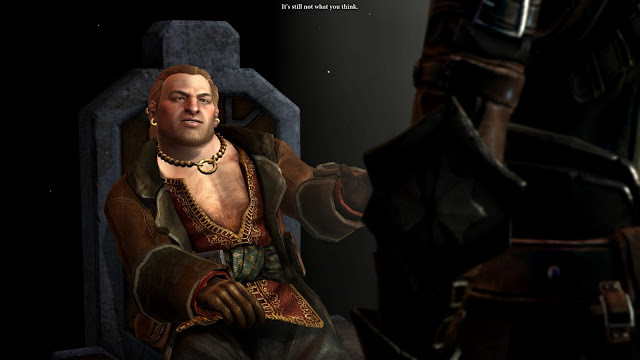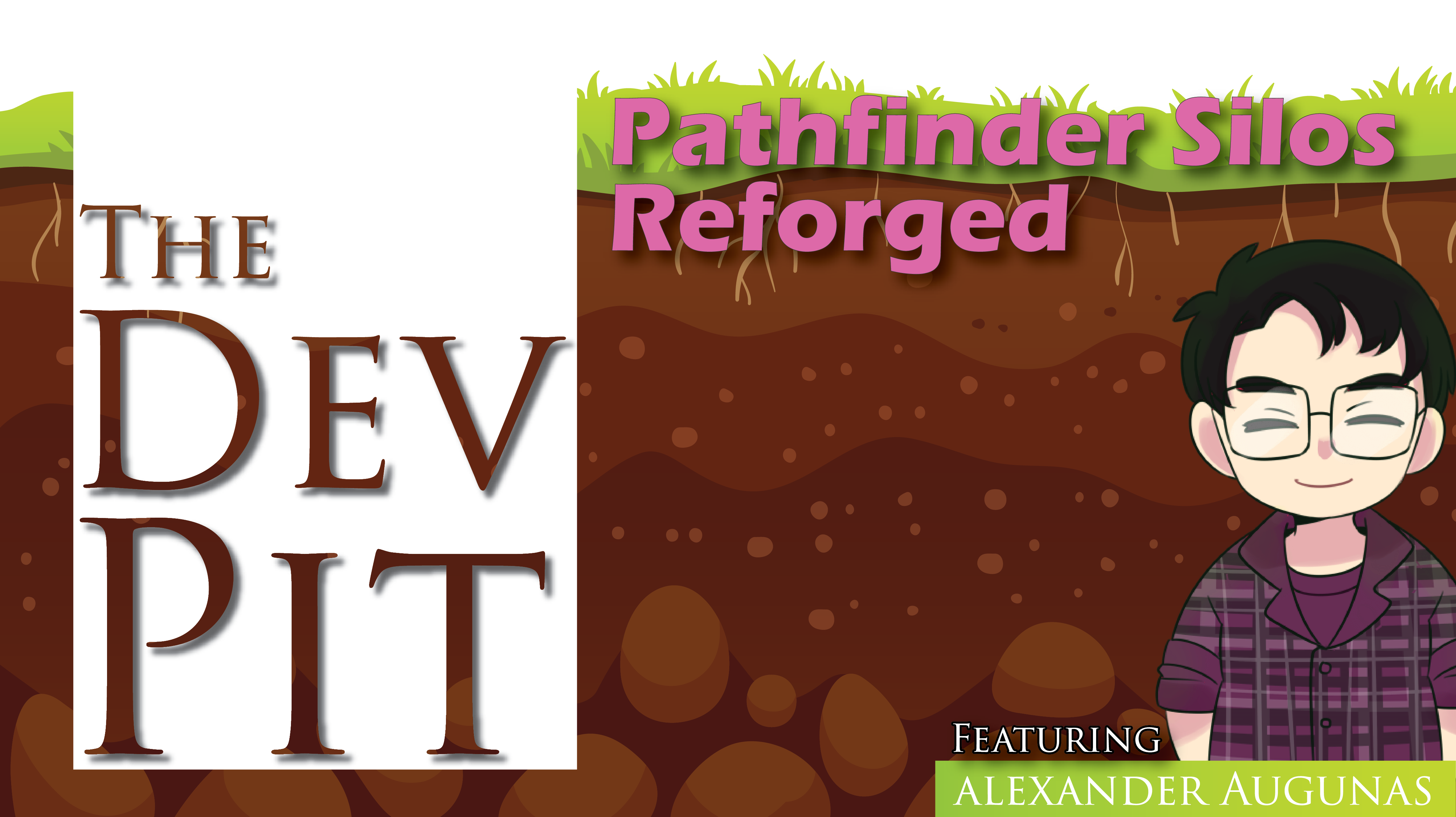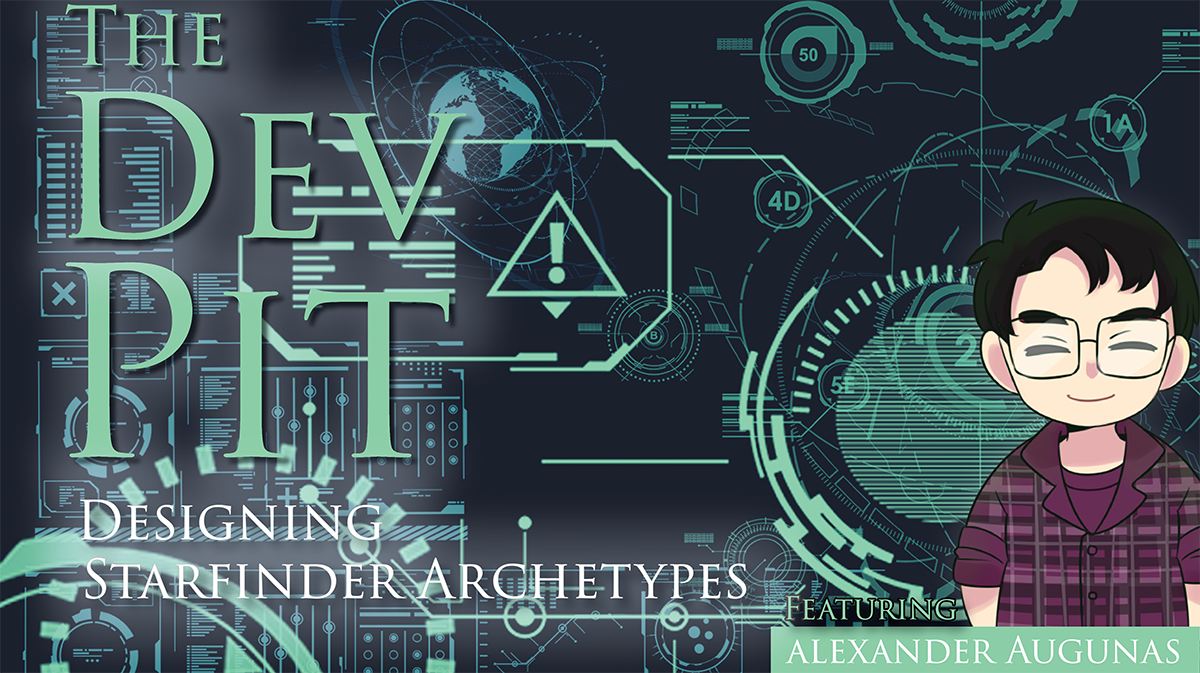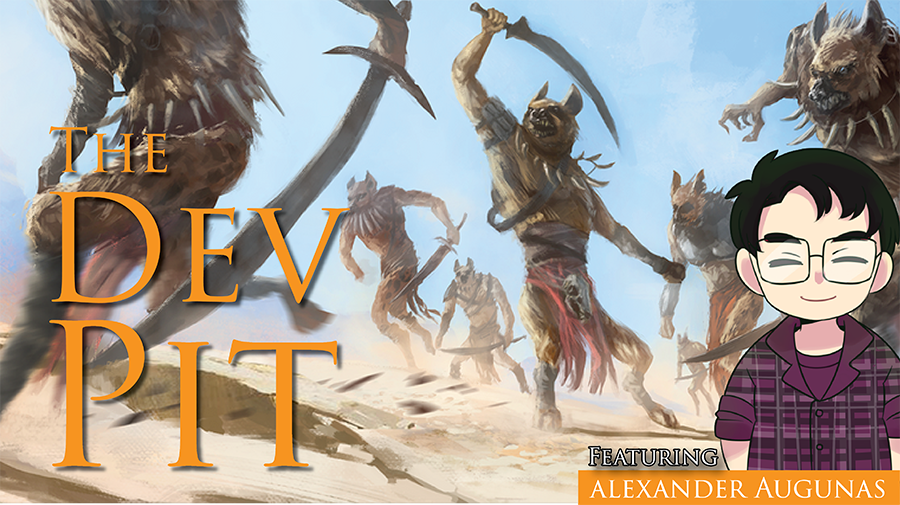Hello, and welcome to the third installment of the Dev Pitt! I’m Alex Augunas, the Everyman Gamer, and today we’re talking about puzzle design in Tabletop RPGs. Puzzl—

W-wait! I haven’t even started yet! Puzzles—

HEY! STOP IT! Let me finish!
Puzzles in tabletop RPGs have a long history of being done rather poorly because they’re seldom integrated well with the game they’re being placed in. Personally, I enjoy a good puzzle, but I can only recall a single puzzle that I’ve ever seen done well out of the hundreds of Pathfinder and Starfinder adventures I’ve played in. Today, I’m going to be talking about what makes a well-designed puzzle so that as a community, we can step up our puzzle game. Ready? Let’s go!
Setting the Scene
Since we’re basically at the end of Pathfinder 1st Edition, I feel fairly confident that I can spoil a scenario that’s almost five years old at the time I’m writing this to use as an example regarding what NOT to do for a puzzle. This scenario is PFS 7-02: Six Seconds to Midnight. Essentially, there’s a puzzle in this scenario that involves what amounts to the teleporter pads in Pokemon Red and Blue’s Sylph Co facilities; you step on one pad, you teleport somewhere else. The point of the puzzle is to navigate the teleportation points to read the end. Now, in Pokemon hours of trial and error will allow you to eventually solve the puzzle. In this scenario, the puzzle is timed, and there aren’t any real clues that the PCs can garner about how the puzzle works aside from good, old-fashioned trial and error. If you check out the scenario on Paizo’s website, its one of the lowest-rated out of several hundred on the entire site. While one can debate about whether or not other aspects of the scenario have problems, over 70% of the negative reviews on Paizo’s website cite the puzzle as a primary reason to avoid Six Seconds to Midnight. (Note: The puzzle is doable. KDN’s own Vanessa Hoskins has a review on the secenario that explains that it needs a firm GM understanding to convey information properly to the players. But it certainly seems like it is frustrating to reach that level of understanding for the average GM, and fault for that falls on the puzzle’s design, not on the GMs trying to run the puzzle.)
So, what does this puzzle have to do with our discussion on designing puzzles? A lot, actually. Let’s go over the failings of the Sylph Co. Puzzle before we move on, shall we?
- The information is not conveyed effectively. A good puzzle relies on precision in how it handles information. Not only does a good puzzle need to be able to convey its function and how to solve it quickly and effectively to the GM, it also needs to give the GMs guidelines on how information can be given to the players in a fair, effective manner. If the GM is unable to give information to the players, the puzzle is basically insolvable.
- The puzzle is laden with red herrings. A red herring is basically a “false clue” that’s designed to throw the puzzle solver off-track. Red herrings in and of themselves aren’t bad, but generally speaking you should only have one red herring for every three actual clues; a 1 to 3 ratio, essentially. (If you’ve ever played my PFS Scenario, A Testament of Souls, you can see this in Part 1 of my adventure where you’re interviewing witnesses.) A puzzle that tries too hard to throw those attempting to solve it WILL lose them, and it’s not fair when it feels like every option is actually one of those little mines from mind sweeper. BOOM.
- The puzzle lacks any meaningful way for the characters to learn about it. This, to me, is the biggest problem that most TTRPG puzzles have. This puzzle, and the majority puzzles that I see, lack any real way for the CHARACTERS to learn about them. Not the players, the CHARACTERS. Not following me? That’s cool—this idea is what most of the rest of my article is going to be about.
Characters vs. Players
The heart of a Tabletop RPG is the divide between the Players and their Characters. Each character is typically designed with a host of abilities and skills that they use to complete tasks and trials, and generally speaking the abilities of the player don’t interact with the abilities of the character. For instance, theoretically it shouldn’t matter that a player knows all about vampires, just because the player knows that they need to stake the vampire in the heart doesn’t mean that their character has the abilities to do it. Used in reverse, just because the character has high Charisma or is proficient with siege weaponry doesn’t mean that their player needs to be eloquent or know how to load and fire a ballistic in order to have their character do it. The abilities of the player and their character are distinct.
HOWEVER, when most designers make puzzles, this distinction falls apart. Suddenly the player needs to be able to use a cipher in order to solve puzzle, or the player needs to be able to figure out the connections between a series of magical teleportation pads. The character and their knowledges often have very little meaning in puzzles; the player gets a handout and is told to solve the puzzle. This completely violates the boundaries between character ability and player ability, and allows a weird scenario where the Int 8 Barbarian solves the puzzle before the Int 16 Wizard simply because the barbarian’s player is better at puzzles. (Note, the point of this comparison isn’t that Intelligence is the “puzzle stat”, only that player-focused puzzle design can cause a disjoint between character concept and what happens in the game.)
In Summary,
puzzles are a fun, integral part of the dungeon delving experience, and they have a place in Tabletop RPGs. However, traditional puzzle design has a number of issues that make them difficult to solve and narratively unsatisfying. If you need to design puzzles for your tabletop RPG adventure, here are some tips to help make it more fun and engaging.
- Make sure the puzzle interacts with the game’s mechanics. Don’t just hand your players a handout and tell them to get to it, allow them to roll skill checks and use special abilities and features to give them clues. A skill check should never let the players solve the puzzle outright, but it should point them in the right direction.
- Limit red herrings. Generally speaking, if all your clues are fake you’re sacrificing your players’ trust in you, the GM, simply to make one puzzle more frustrating. Keep your red herrings limited to about 1 in every 4 clues, and allow players the ability to use game mechanics to help them determine which red herrings are false. For example allowing your players to attempt skill checks to realize which clues are detrimental to their goals.
- Make explanations clear and efficient. Take the time to lay out to your GMs except what your puzzle is, how it works, and how to solve it. Use bulleted lists, subheadings, and similar tools to make the puzzle as quick and easy to parse as possible. If you have the space, write out the clues you want your GMs to read to the players specifically so the GMs know how much information to give out at a time. This makes sure that GMs are always providing the amount of information you need at any given moment.
- Continue to Allow Player Innovation. Most of this article has been about how relying on player knowledge for puzzles isn’t great puzzle design, but at the same time you shouldn’t penalize players for being clever. If the players manage to solve your puzzle without needing the skill checks and game mechanics, that’s fine. The point of connecting the game’s rules to the puzzle isn’t to take the fun away from people who are genuinely good at puzzles, its to make sure that your puzzles don’t become an unbearable roadblock that saps all the enthusiasm from your adventure.
I hope you found this article enjoyable to read! As always, I’m looking for feedback regarding what sort of topics you’d like me to cover in the Dev Pit, and look forward to your engagement! Safe travels and have a fantastic week!

Alexander “Alex” Augunas has been playing roleplaying games since 2007, which isn’t nearly as long as 90% of his colleagues. Alexander is an active freelancer for the Pathfinder and Starfinder Roleplaying Games, owns Everyman Gaming LLC, and cohosts Know Direction: Beyond with James Ballod and Jefferson “Perram” Thacker. You can keep up with Alex’s exploits on the Know Direction Discord or at his Twitter, @AIJAug.






I think you hit the nail on the head. Even Wounded Wisp’s puzzle has an issue where it’s impossible for the players to receive a crucial clue unless they ask to make a very specific Knowledge check that they would never do unless they knew about the clue in the first place.
Though, in my experience, red-herrings are more engaging if the puzzle hints the possible existence of red herrings. If the players know there might be a red-herring, then it adds another layer of decision making. If they do not know, then it feels like the GM/adventure cheated them.